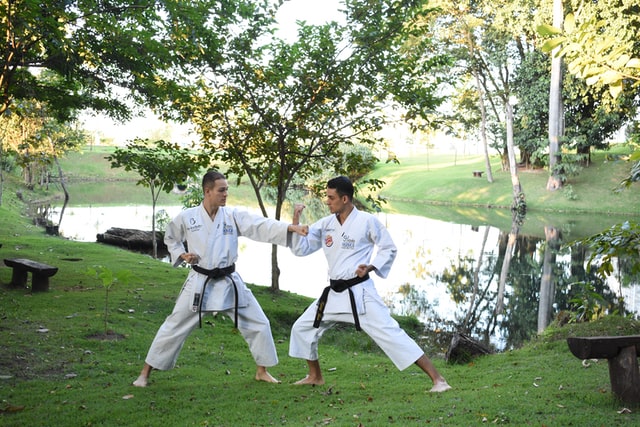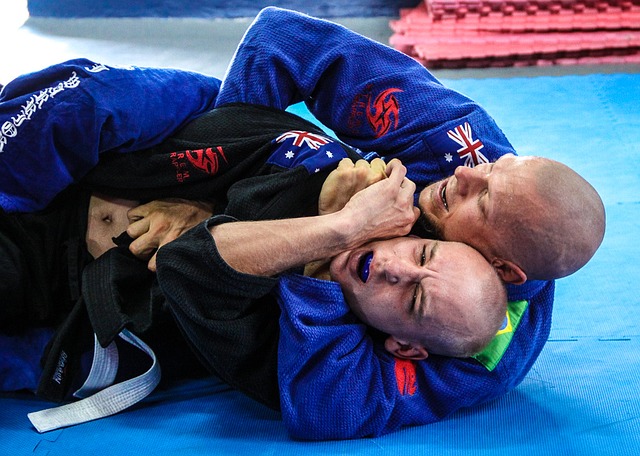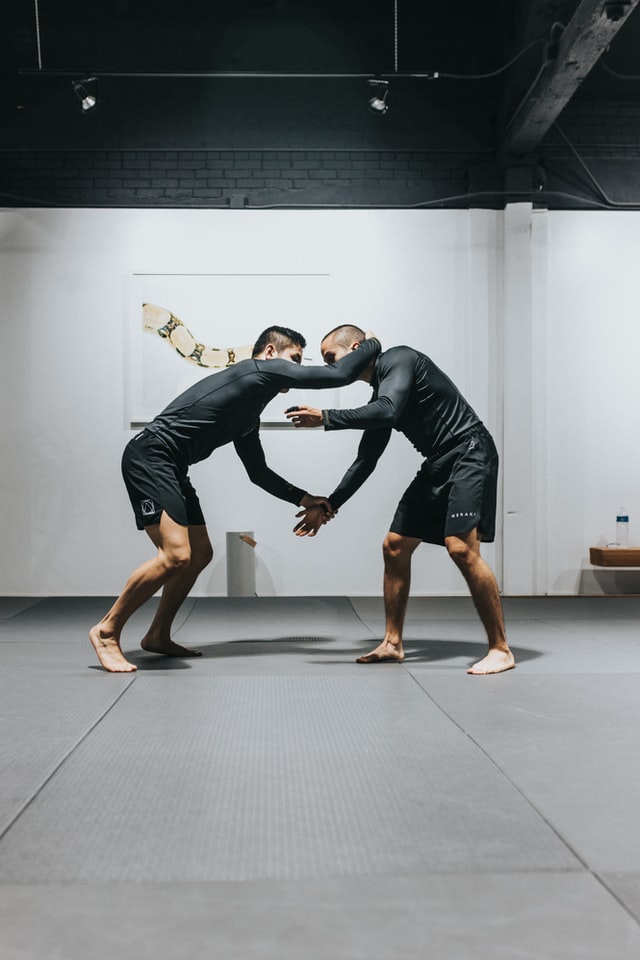Is Jiu-Jitsu better than Karate? Comparison of Two Popular Martial Arts in 2025
Whether or not BJJ is better than karate depends on the reason why you’re learning either martial art. If you’re thinking about self-defense, hands down, BJJ is better than Karate. But if you’re interested in striking and awesome fight moves, then Karate may be better.
Now to really understand which one is better it is important to know a bit about the background of these two arts to make a reasonable comparison.
The etymology of the word “Jiu-Jitsu” suggests that the term comprises of two segments – “Jiu” (gentle) and “Jitsu” (art), which makes it a “gentle art.” It is self-explanatory from its name that Jiu-Jitsu is not an extreme form of martial art, rather it is a completely non-violent one. Jiu-Jitsu practitioners solely depend on timing, angles, pressure, and leverage to approach their opponents. Karate, on the other hand, involves striking and kicking as defensive tactics. While it is not obviously easy to decide whether Jiu-jitsu is more effective than Karate, this article will provide you with enough information about these two forms of martial arts.
Brief history
When it comes to Ju-Jitsu, the founder of Judo, Kano Jigoro, sent his 5 best students abroad to demonstrate the art of Judo. Mitsuyo Maeda, considered to be the first mixed martial artist of the modern era, was included in the group of five. Maeda went to travel the world and displayed demonstrations in every country he traveled to.
When Maeda went to Brazil, a young man by the name of Carlos Gracie was among the audience in one of Maeda’s demonstrations. Carlos showed his eagerness to be trained by Maeda. Maeda trained Carlos for several years, and after Maeda moved on from Brazil, Carlos started his own Judo school to train others. Carlos was assisted by his brothers in the process of teaching Judo to new students, but one of the brothers, Helio Gracie, could not join them due to his physical weakness. Helio started to modify his brothers’ techniques to develop a simpler style of fighting, which replaced the stand-up form of fighting that most martial arts include.
This new style promoted by Helio turned out to be extremely efficient. Helio was able to defeat his larger and physically stronger brothers with the techniques he developed. He used leverage techniques to bring stronger opponents down to the ground. Brazilian Jiu-Jitsu combines ground techniques, torsions, and submissions to be recognized as an extremely effective fighting technique. The simplicity of this art form enables fighters to focus on a small number of techniques and master them.
The origin of Karate is debatable. Karate is sometimes presumed to be invented by Indian monks who wanted to use it as a tool to defend themselves with bare hands. Another origin story suggests that it was developed by the native inhabitants of the Ryukyu kingdom, which is an island kingdom that ruled the Japanese Ryukyu islands from the 15th to the 19th century.
The martial art that is now Karate gained popularity in the Ryukyu kingdom and borrowed from the Chinese Kung Fu. When the empire of Japan annexed the Ryukyu kingdom in 1879, the Ryukyuan people took the martial art to the mainland when they migrated in search of work.
The martial art received nationwide applause as the Japanese education ministry invited the father of modern Karate, Funakoshi, to give a demonstration in Tokyo. Karate clubs started to emerge gradually in major Japanese universities, and almost every large Japanese university opened a Karate club by 1932.
International recognition of Karate owes to the American occupation of Okinawa island after the second world war. Americans became familiar with the martial art form of Karate, and they disseminated their learnings as they returned home. Due to an increasing preference for Karate as a martial arts form, Japanese instructors started to move to America and other parts of the world, making Karate a widely practiced martial art form all over the world. Movies on martial arts also predominantly promoted Karate, and it is still one of the most frequently practiced martial arts globally.
Unlike Jiu-Jitsu, Karate relies solely on the striking ability of the hands and feet.

Which is the better one – Jiu-Jitsu or Karate?
Brazilian Jiu-Jitsu does not involve striking like Karate, but its practitioners definitely know how to throw a punch when the situation demands. Jiu-Jitsu uses strikes to subdue opponents, grapple them, or to defend oneself from being grappled. On the contrary, Karate puts a great deal of emphasis on the striking power from standing positions, getting rid of any ground fight if possible.
A Jiu-Jitsu fighter usually tries to nullify the striking power of the opponent by moving the fight to the ground as soon as possible. Consequently, the opponent hardly gets the chance to show as much power in a punch or a kick, while the trained fighters can transfer power from their legs, up through their hips, to their fist – even in the standing position. This allows them to punch using full-body power.
While an opponent is moved to the ground, it is not only that the amount of power generated for a punch or a kick decreases instantaneously, some other vital body parts of the practitioner can also be protected. Perfect guard techniques and proper placement of the opponent can protect sensitive body parts like – ear on the head from enemy attack. A BJJ fighter can quickly move into a position on the ground and use much of the bodyweight against specific regions of the opponent’s body, especially the limbs, and this tactic is known as the arm or leg lock. In a straight angle lock, the opponent’s foot is captured and held against the ribs.
Afterward, a Jiu-Jitsu fighter can roll and use arms, back, and chest to apply immense force to the foot, breaking it if the opponent denies surrendering. Many of the Jiu-Jitsu techniques require applying such extreme pressure on vulnerable parts of the body. This is the reason that enables fighters who are comparatively smaller in size to suppress heavyweight opponents.

Karate emphasizes keeping the fight as upright as possible, attempting to stop the fight by delivering an extremely forceful blow to the opponent’s vulnerable body parts. Rather than using force or physically incapacitating an opponent, Karate uses aggressive techniques like a devastating elbow strike to put incredible force to a very specific point on the opponent’s body. Combo attacks like the low kick-high kick combo can let a Karate fighter launch a series of low kicks at his opponent’s legs. When the opponent drops guard to protect against another predicted low kick, the karate fighter grabs this opportunity to launch a high kick aiming at the opponent’s head or open torso. Given all these techniques, Karate does not completely exclude groundwork, however it is more often than not ignored in practice or has gotten lost over the years.
So, which one is the better form of martial art – BJJ or Karate?

Verdict
It is challenging to declare a clear winner. Brazilian Jiu Jitsu’s focus on closing the distance between yourself and your opponent, and making it a ground fight, negate the devastating striking techniques that other martial arts forms include. It also reduces the chances of hurting yourself unintentionally by throwing a poorly executed kick or punch, which could lead to a broken hand or foot otherwise.
Karate, on the contrary, defeats any opponent before he gets close enough to hurt yourself. It prioritizes the guards against strikes, which give you tools to minimize damage caused by any powerful opponent. Karate enables a fighter to stay mobile, which is necessary to face multiple opponents. However, a Jiu-Jitsu practitioner has to rely on a sort of focus on a single opponent at a time, making it a less effective martial art form to defend yourself from multiple opponents. The advantages that Jiu-Jitsu brings forth cannot be ignored though, as small fighters can easily defeat a heavyweight opponent using its leverage techniques, which is not the case for a Karate fighter.
Despite the merit that both martial arts bring to the table, we say that BJJ is more suited for self-defense since most street fights end up on the ground. The techniques also reduce striking exchanges and force and you are less likely to get hurt by punches and kicks.

